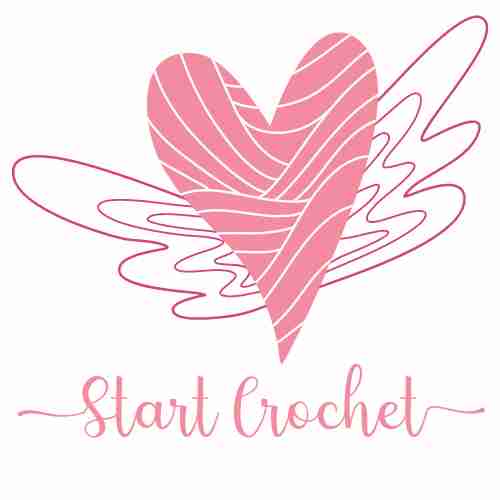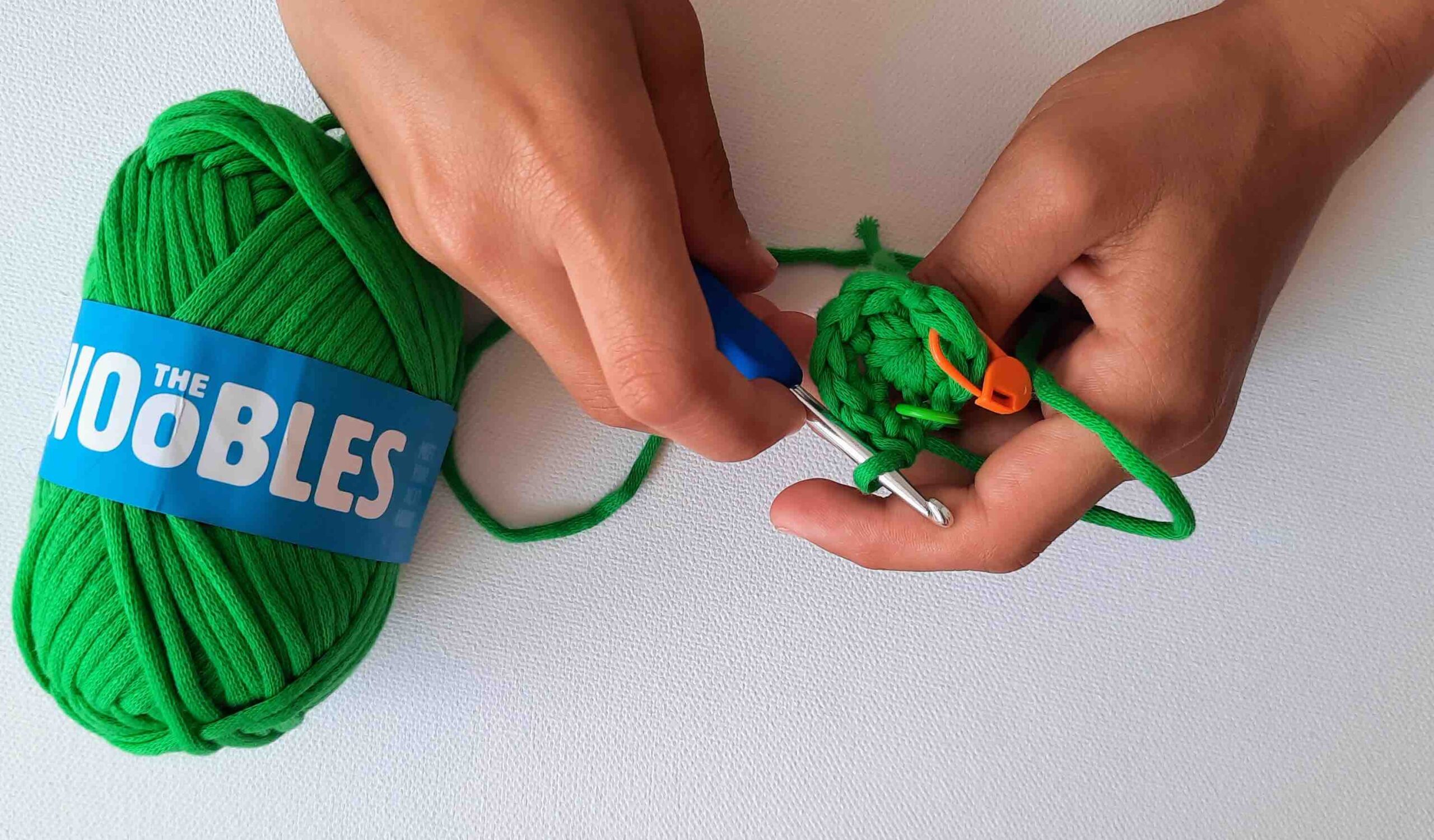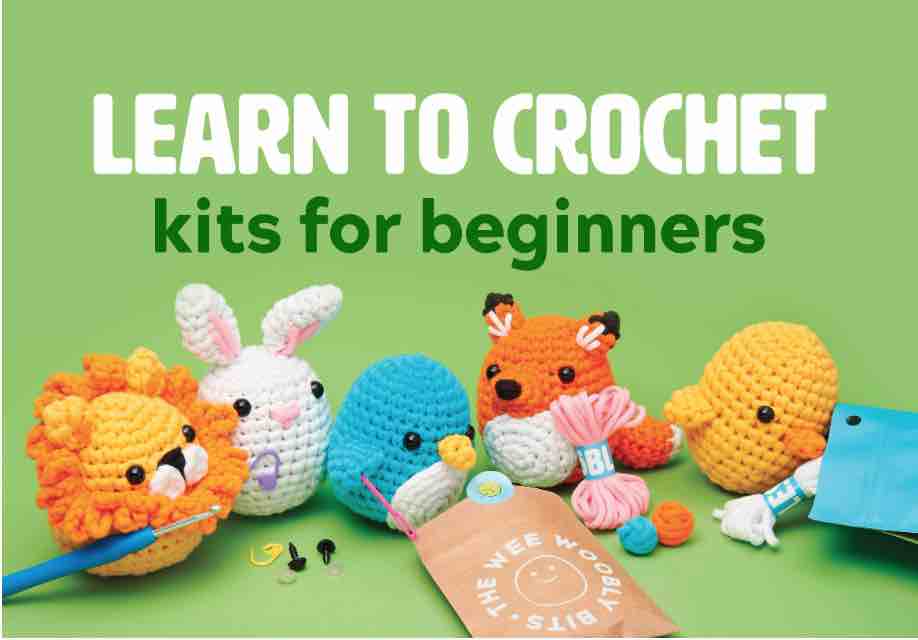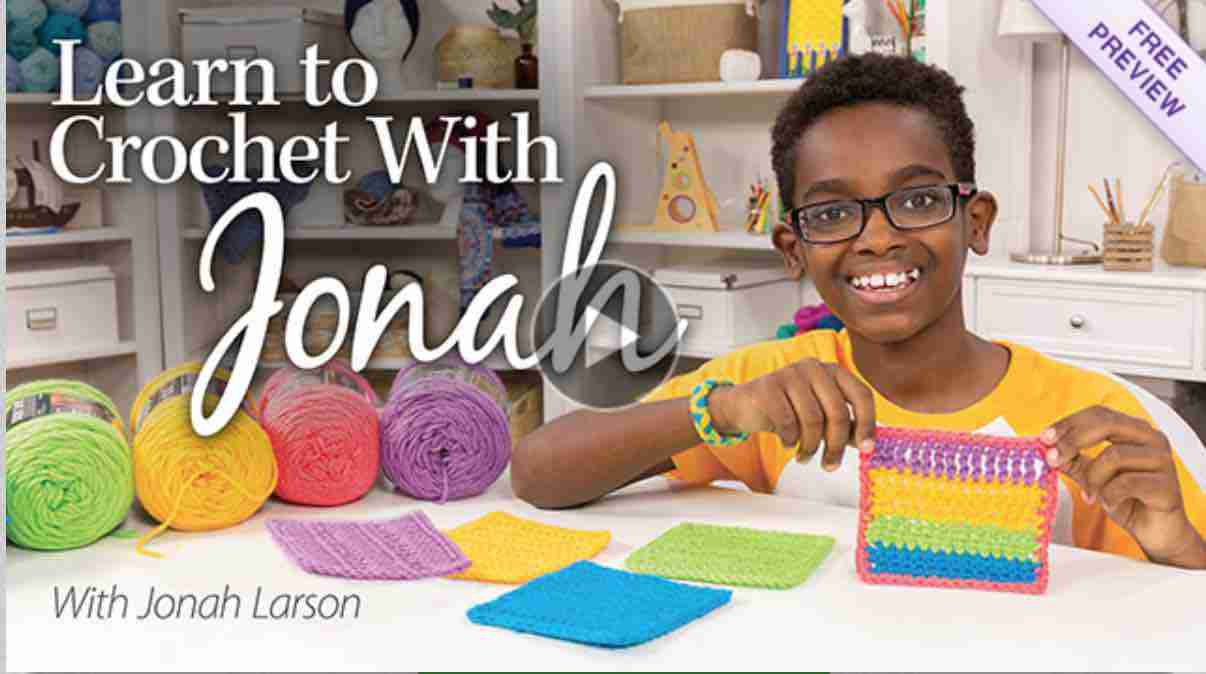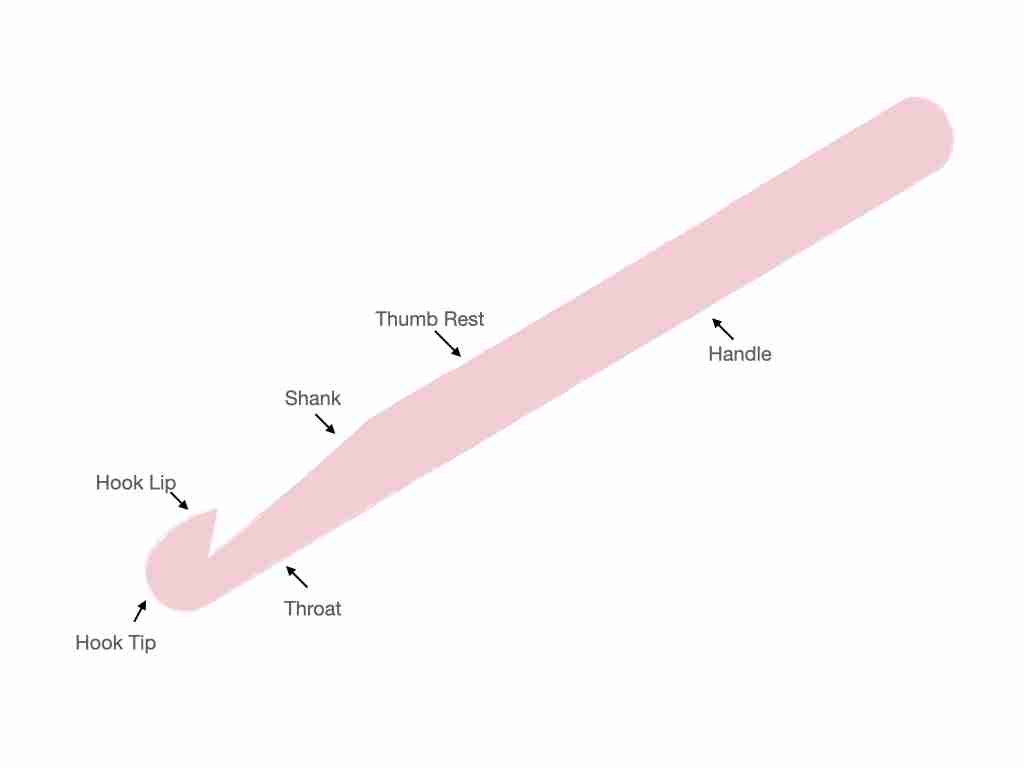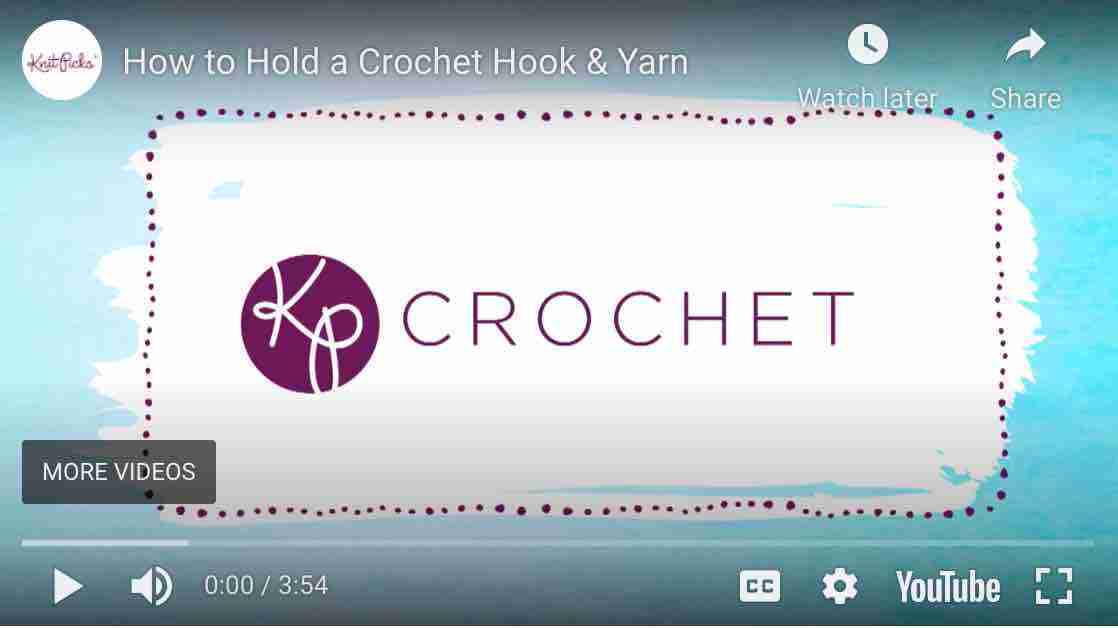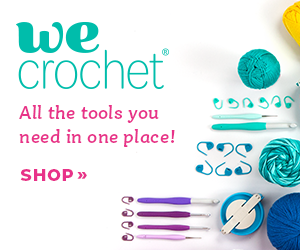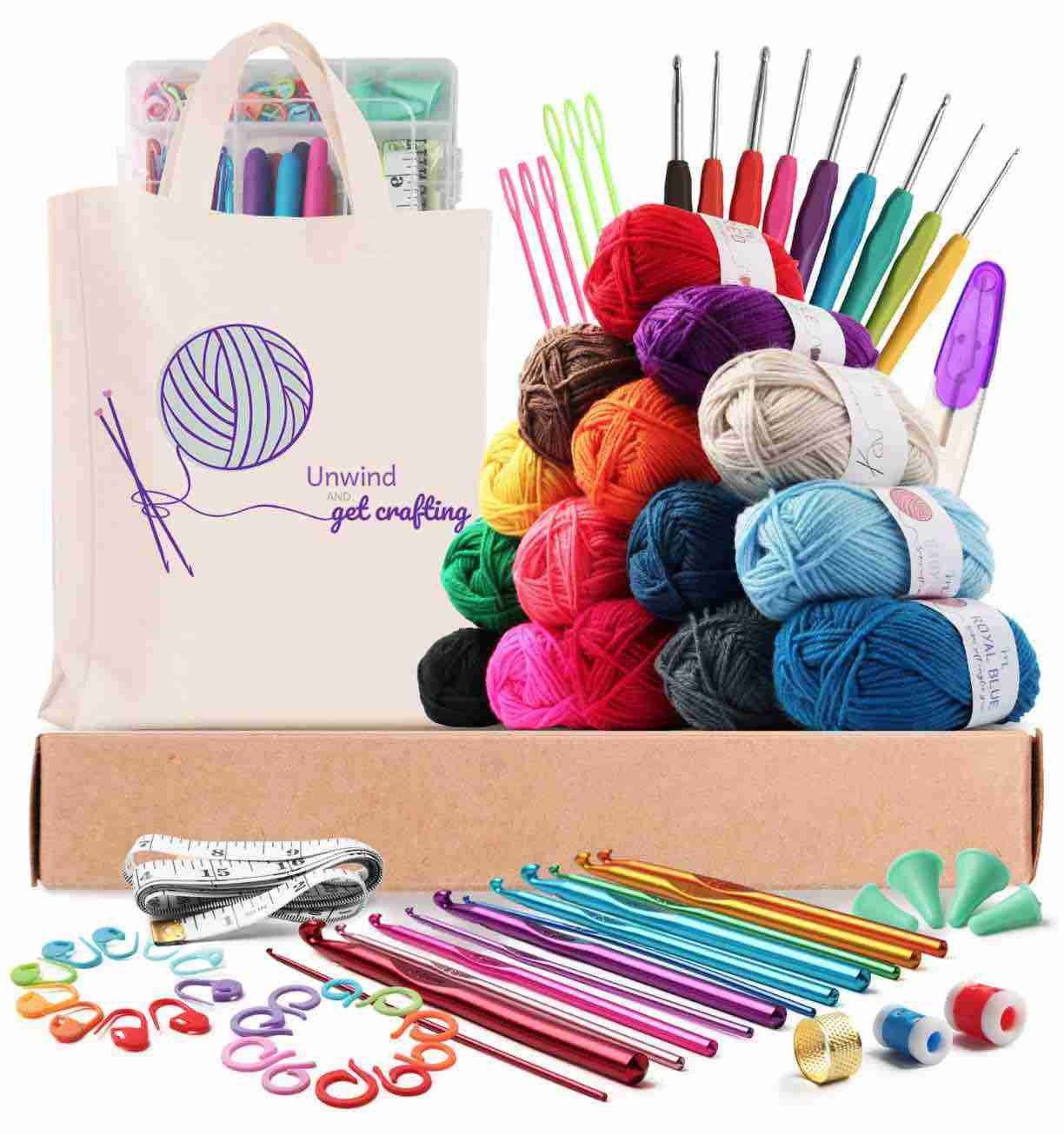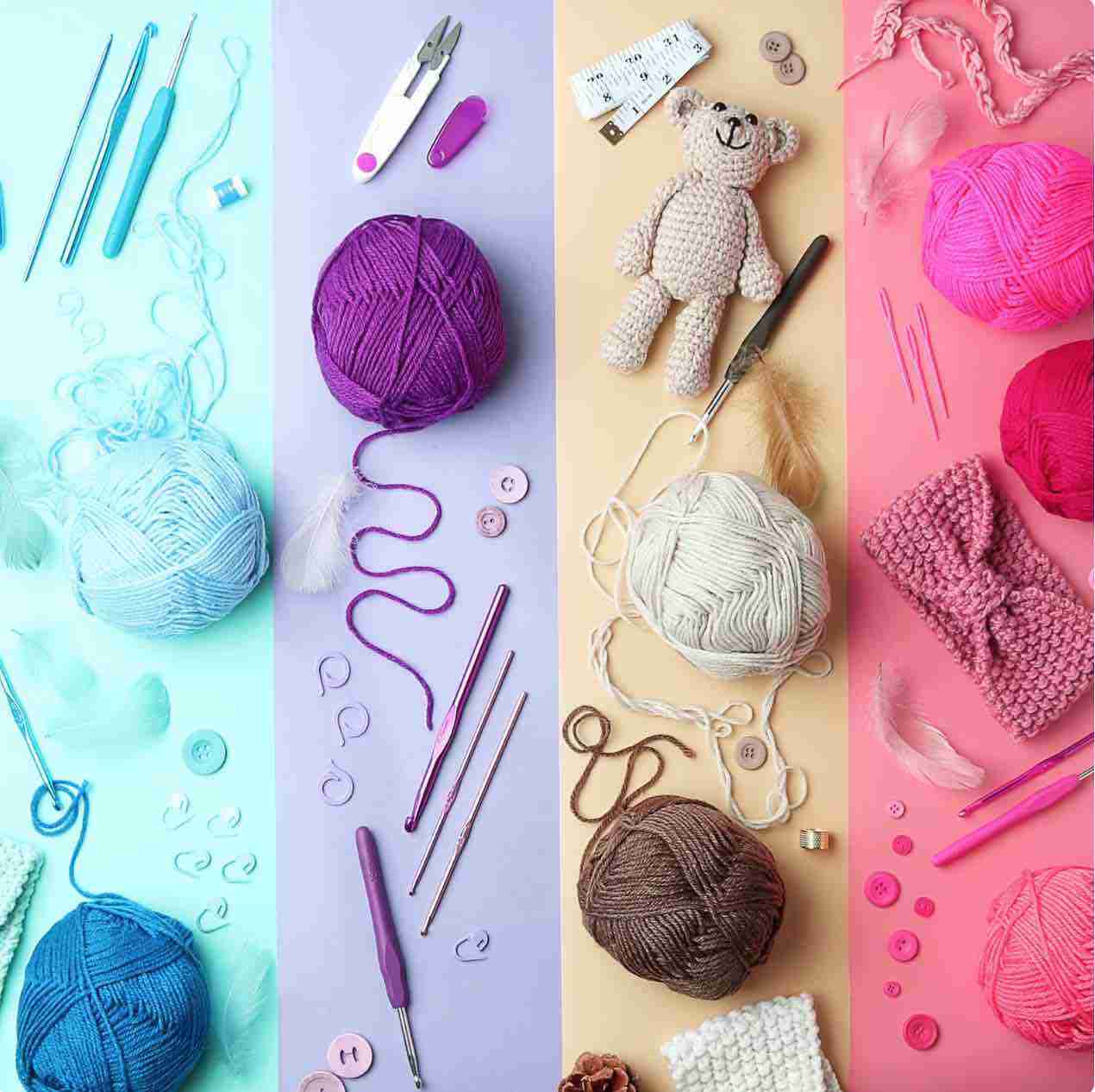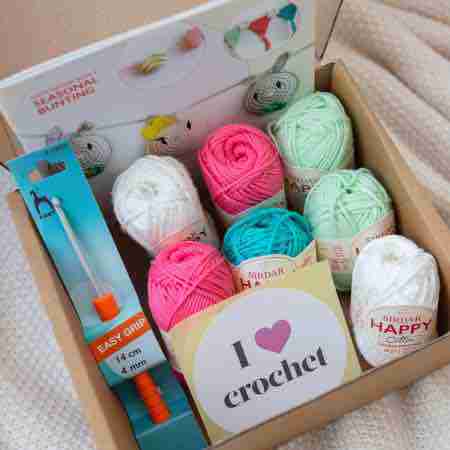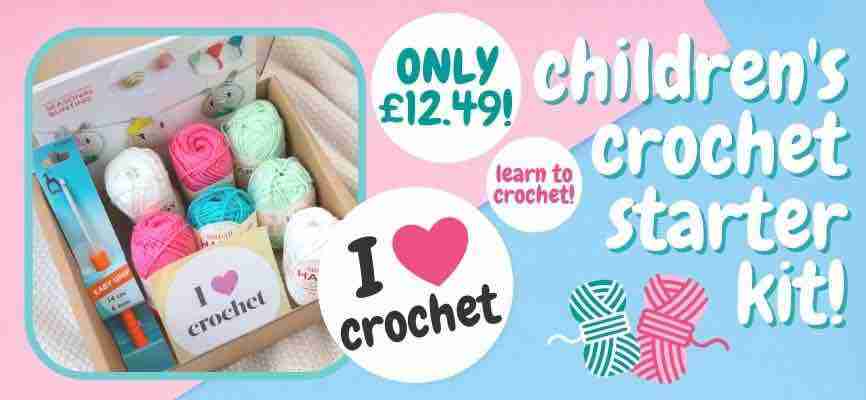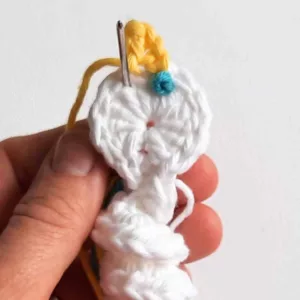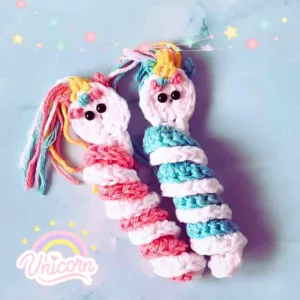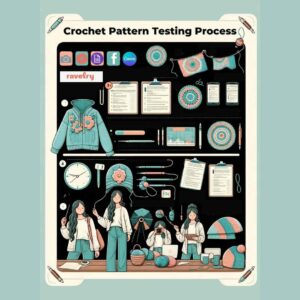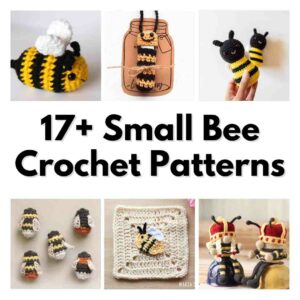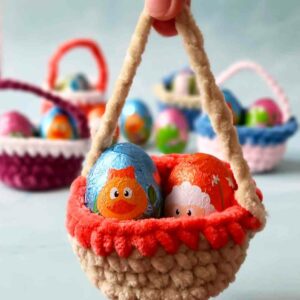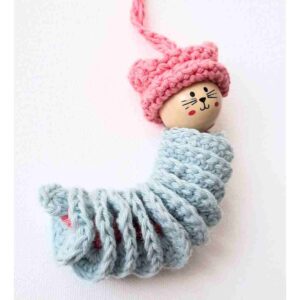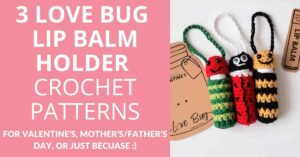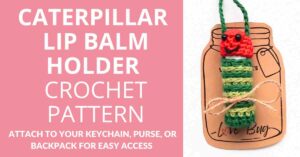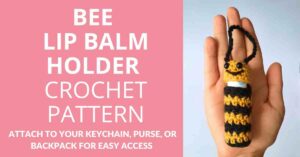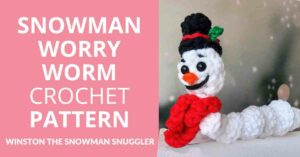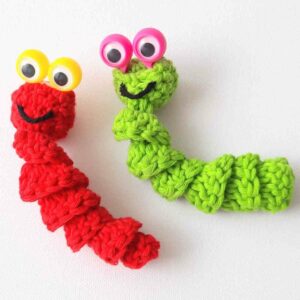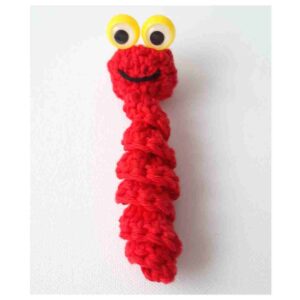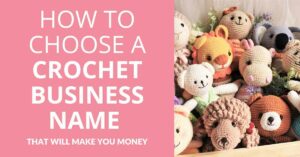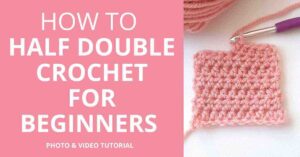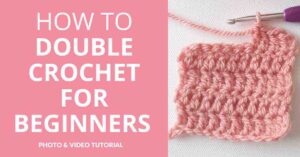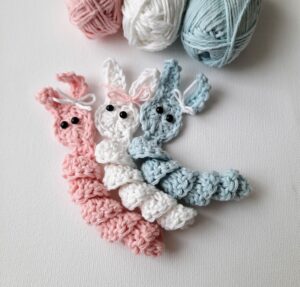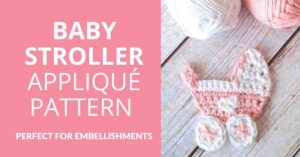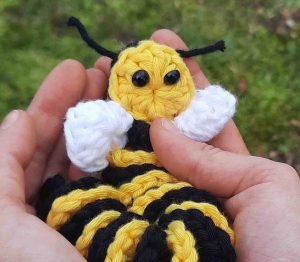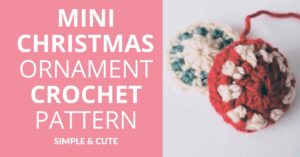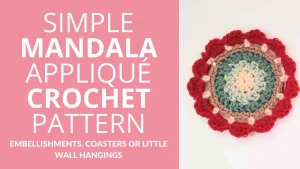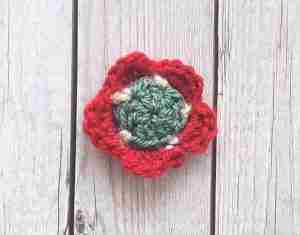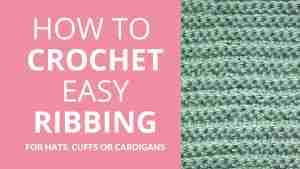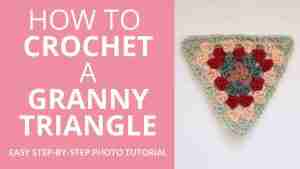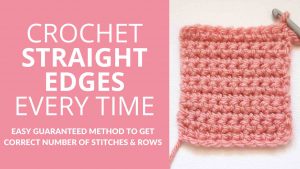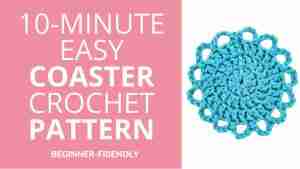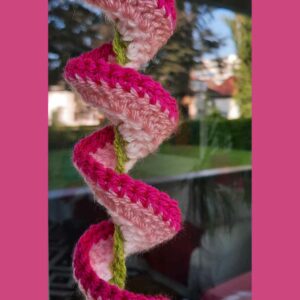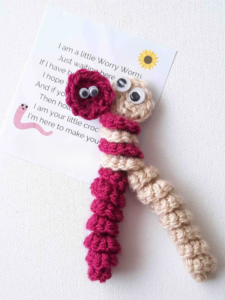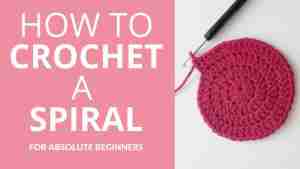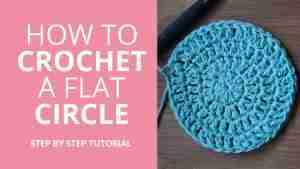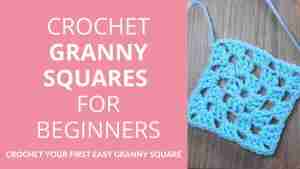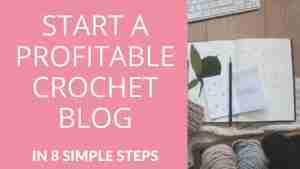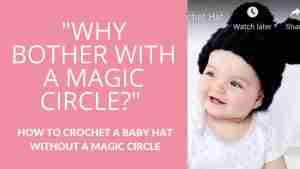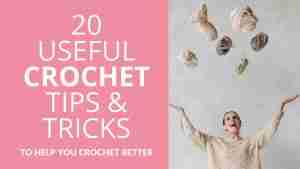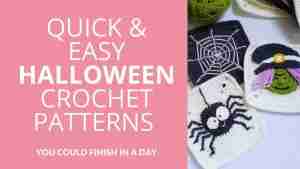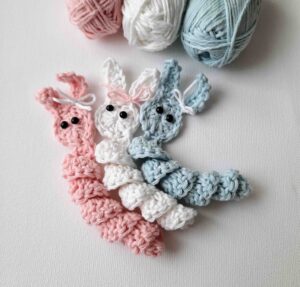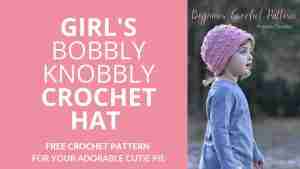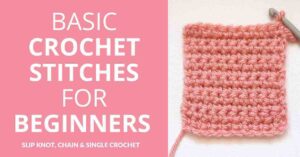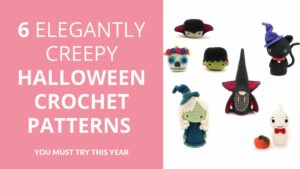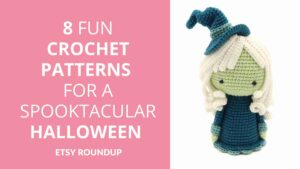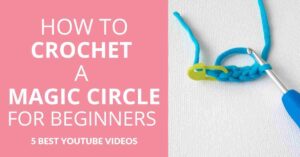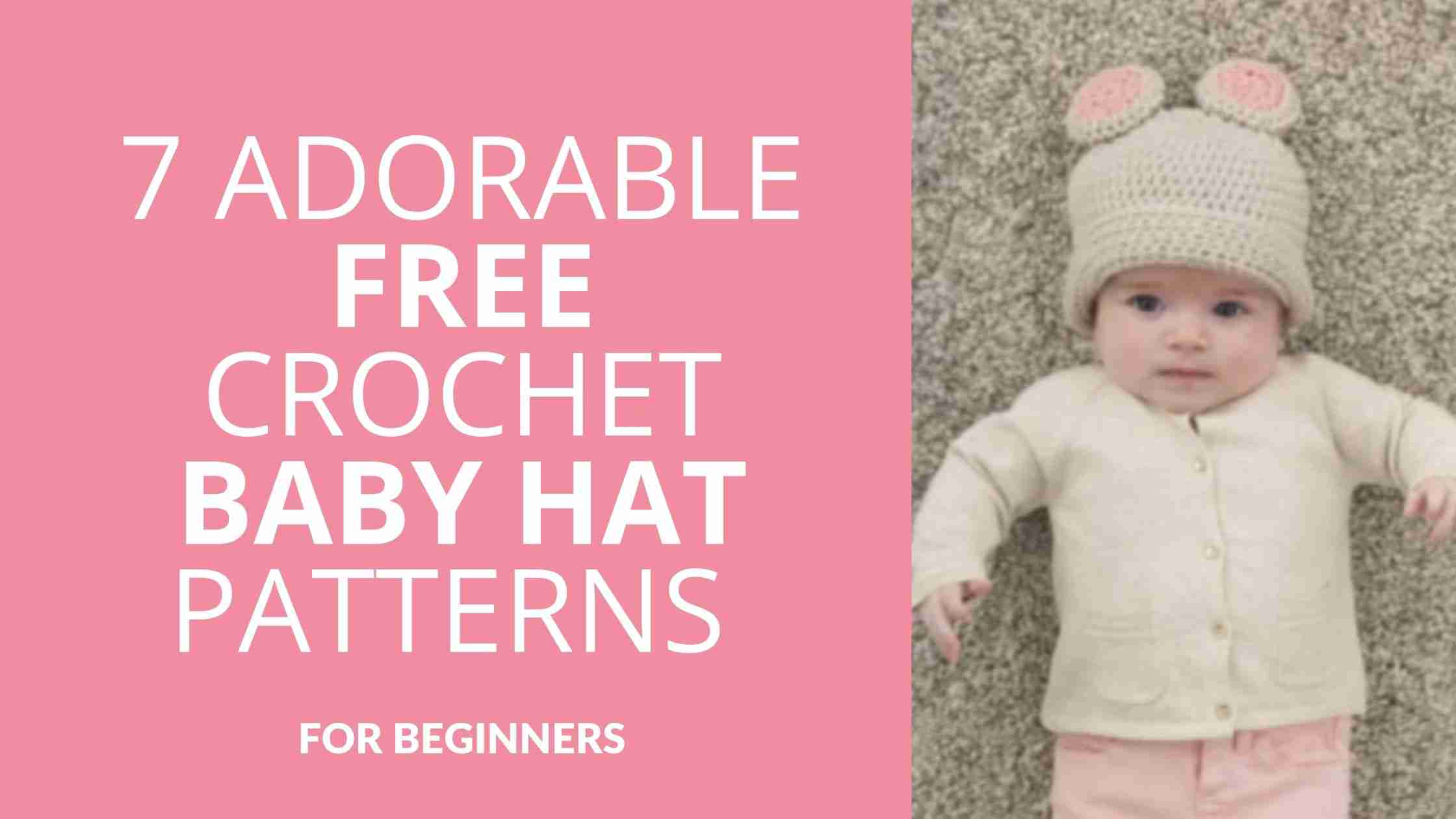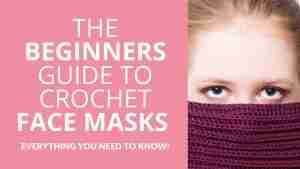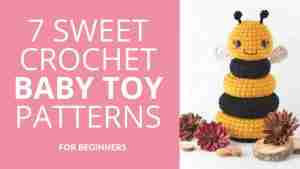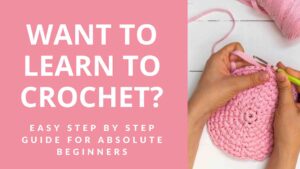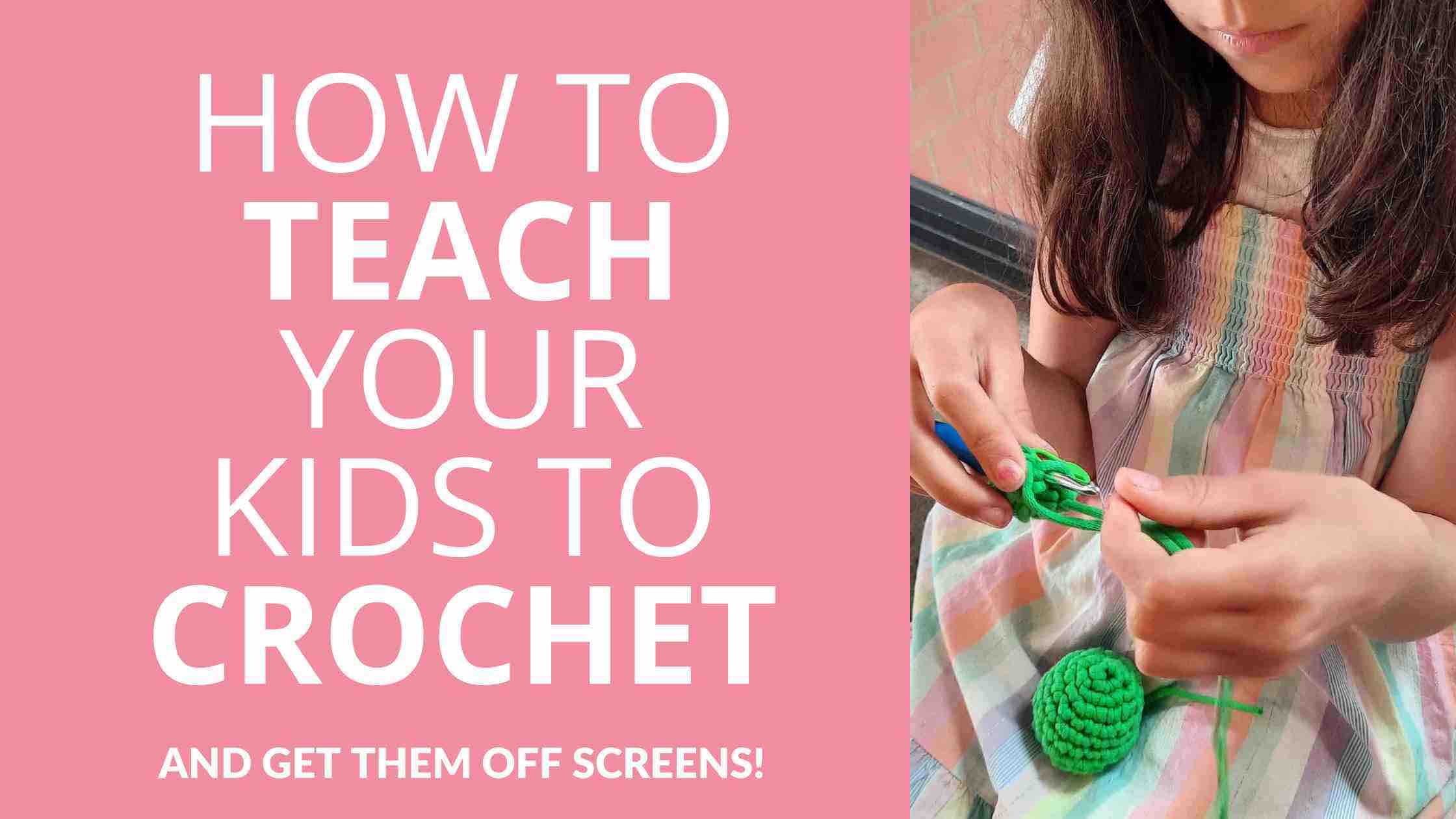
How To Teach Your Kids to Crochet
Tips & Tricks
So your child wants to learn how to crochet?
That's awesome!
Teaching kids to crochet can be a very rewarding experience...
especially if You're Worried Your Kids Are Doing Too Much screen time!
Most of my friends give their kids unlimited screen time...
I think this is really bad for their mental health, so I restrict my kid's screen time to a couple of hours on the weekends.
There is so much we can teach our kids that'll help them grow into healthy human beings, and one major thing is starting a hobby.
You probably already know all the benefits crochet offers.
So here's My Advice: Teach Kids How to Crochet 🙂
You'll be so proud of them & they'll surely be proud of themselves too!
Kids and teens are the perfect students to learn crochet.
You can teach them in small simple steps and their new hobby will give them a lifelong skill that fosters patience, creativity and a sense of accomplishment.
It’s fun and it’s a fantastic creative outlet for kids, screen free!
And what better way to spend quality time with your kids teaching them something so exciting? It’s a memory they’ll carry with them forever.
It also teaches them problem-solving and math skills.
And best of all, it is a meditative activity that has a calming effect, great for indoors and waiting at doctor’s waiting rooms, at airports & you guessed it! During lockdowns!!
This post contains affiliate links, which means I receive a small commission, at no extra cost to you, if you make a purchase using the Start Crochet links. Please see my disclosure for more details.
Are you just learning how to crochet? Have a look at these awesome crochet kits, perfect for beginners! I wrote a complete hands-on review on The Woobles Kits for you 🙂
The easiest way to teach a child to crochet is with crochet kits.
The Woobles is by far the best crochet kit to start with for kids (and adult beginners alike).
All the tools come pre-packaged in a cute little package and you also get step-by-step instructional videos to guide you through the crochet pattern.
My kids of 7 & 8 years are both addicted to the Wobbles. They've made a few plushies all by themselves just watching the instructional videos that come along with The Woobles kits.
If you'd like to read an in-depth review of The Woobles Crochet Kit, have a look at this blog post.
Crochet Curriculum At Schools
Crochet for the classroom is gaining popularity again. The Waldorf Schools have yarn crafts integrated into their schooling curriculum. Here in Switzerland, that's the case too. In most schools, starting from second grade already, both girls and boys learn how to knit and crochet as well.
How about incorporating crochet into your homeschooling curriculum? Make it an extracurricular activity and trust me, you're kids will be highly enthusiastic to get started!
To get kids excited about crochet, you could show them how to make a “Friendship Bracelet” that they could give to their best friend. It’s very easy to make and will motivate them to get started right away.
Watch 7-Year Old Erin teach how she makes her crochet bracelet (+ easy way to thread a yarn needle for the end of a project) or watch Jonah teaching kids how to crochet:
What’s beautiful about teaching kids to crochet is that they really don’t see the imperfections in their work like we grown ups do.
It’s not about how perfectly they create their masterpiece...
but their sense of accomplishment with the finished product.
My daughter is 4 years old now and has been nagging at me to teach her to crochet.
She’s watched me crochet ever since she was born and has been happily playing with all the amigurumi toys I’ve made for her.
What Is Amigurumi?
Do you know what Amigurumi is? It's the Japanese name for crocheted (or knitted) small soft creatures/toys.
It’s so rewarding when your kids have favourite characters or ask for something in particular and you’re able to create it for them just by finding a pattern and using some yarn and a hook to make it!
Sometimes it takes less time to make a soft toy than finding that character in a store or even online!
So I’m super excited to teach my daughter how to crochet and make her own little creations!
And best of all, she’s the one who approached me!
So I’m hoping her interest and excitement will make it even easier for her to learn.
I’ve done some research on teaching kids to crochet and I’m sharing with you here what I’ve discovered so far,
as well as my own experience with this,
the steps, the tools & materials needed...
and how to encourage them to keep going in case they get frustrated right at the beginning.
Questions Kids Ask When Learning How To Crochet
What's The Difference Between Crochet, Knitting & Sewing?
I’ve noticed that my daughter seems to confuse crochet with knitting or sewing. She can’t quite grasp the difference, so I started out showing her the different uses of each (eg. that sewing can be used to mend torn clothes or design and create dresses, etc.).
The basic materials of crochet include a crochet hook, some yarn and a pattern. Crochet hooks come in different sizes and materials.
Yarns or wool also come in thousands of different colours, textures, chunkiness, materials (and price ranges).
Similarly, knitting also uses yarn and patterns, but uses 2 knitting needles instead of just one crochet hook.
There are many types of stitches in crochet, as opposed to knitting, which only has 2 types of stitches (knitting and purling).
I personally prefer crochet because there is such a wide variety of stitches I can experiment with that give different outcomes and also...
Crocheting seems to me to be a wee bit faster than knitting...
So I can actually create a finished project in a day or just a few hours sometimes.
So I’m super excited to teach my daughter how to crochet and make her own little creations!
And best of all, she’s the one who approached me!
So I’m hoping her interest and excitement will make it even easier for her to learn.
I’ve done some research on teaching kids to crochet and I’m sharing with you here what I’ve discovered so far as well as my own experience with this: the steps, the tools & materials needed, and how to encourage them to keep going in case they get frustrated right at the beginning.
What Is A Crochet Hook?
As opposed to knitting needles (that are long, thin & pointed & come in pairs for hand knitting), a crochet hook is a single tool that you use for crocheting. Here's a little diagram I made showing the anatomy of a crochet hook:
Knitting vs. Crochet
Knitting
Crochet
There are some really fabulous crochet hooks on the market! The Furls crochet hooks are very popular because they are simply so beautiful and really easy to crochet with. They come in a variety of styles and sizes and most people love them because they feel a lot less pain in their hands when crocheting for a long time.
How To Avoid Frustration When Learning Crochet
Crochet can be quite intimidating at first, but with the right approach, kids and beginner crocheters can overcome these frustrations quite easily. Learning to crochet is more about the joy of crafting than about getting the stitches just right.
Some of the main problems kids encounter have to do with not having the right equipment to practice with at the beginning, not getting the right instructions from their ‘teacher’, or not getting the encouragement to keep up the enthusiasm of learning a new craft.
Here are some tips for you to make the teaching experience as pleasant and rewarding as possible:
- Find A Relaxing Space Free Of Distractions
Choose a place to start your crochet lesson in a calming environment, where your child can focus on the task at hand and not be distracted by a television show or other kids playing around. Make sure there is good lighting and a comfortable place for the child to sit and have the wool lie next to them without rolling around too much. Perhaps you can put the wool in a basket and place it near them.
- Expose Your Child to Yarn in Different Ways
The first thing I did with my daughter was cut 30cm strips of T-Shirt Yarn and show her how to make a braid. Only when she got a hang of this did I move on to more intricate yarn crafts. The point was to get her used to handling yarn and to keep her engaged until she becomes dexterous enough to start with crochet.
A God’s Eyes project was hugely successful and even Cat’s Cradle
Expose your kids to yarn and keep them engaged until they develop the necessary dexterity.
Besides finger crochet, try winding yarn into balls, playing Cat’s cradle, or wrapping yarn over popsicle sticks to make God’s Eyes.
Another option is to let the child sit on your lap with your hands guiding theirs.
- Let The Kids Pick Their Own Hook and Yarn
Offer appropriate hooks and yarns and have the kids pick the colour and texture they like. This will make the experience so much more exciting!
Explain that crochet hooks are made of different materials: aluminum, plastic, steel, and wood. Offer medium size hooks, preferably made of plastic.
Stay away from fuzzy or fluffy yarns and stick to either cotton or any smooth yarn that’s easy to slip through fingers. Acrylic yarns are the most popular.
Personally, I find T-Shirt yarns are excellent! There’s the Red Heart Super Saver or Zpagetti. I think these are ideal for kids to start with because they’re soft and easy to hold.
The thicker the yarn, the easier it is to see the stitches and detect any errors that might have happened, so you can easily go back and fix them.
- Demonstrate How To Hold Crochet Hook & Yarn
There are several ways to hold your hook & yarn, so here's a short video to demonstrate how to do this easily. Choose whichever way feels most comfortable of course:
- Start The First Few Crochet Stitches For Them
I think it’s best to start by showing the child how you make the first slip knot and a few chain stitches and then handing the project over to them to continue. It just gets them started faster and gives a sense that the project is moving along.
Once they get a hang of the chain stitch, then I’d go back and teach them the slip knot. Keep it nice and loose at the beginning. Just practice “yarn over, pull it through” as many times as possible.
- Don’t Seek Perfection
Kids are known not to have long attention spans, so be grateful they’re trying and don’t get hung up on getting everything just right. Try to avoid too much seriousness and keep the learning experience as fun as possible.
- Use Simple Words
Your really don’t need to get into the nitty gritty of crochet terminology with kids right from the start. Just stick to a few simple words that your kids will surely understand. The point is for the kids to be able to follow a simple instruction and actually do the stitch. They can get into the complexities of crochet terminology at a later stage.
- Have A Plan And Get Your Tools Together
Make sure to have a plan that you can explain what your child will learn during this session. Maybe start with showing what a pattern is, then showing how to read a crochet pattern and what the different abbreviations mean. This only applies to older kids, because honestly, reading a pattern is like learning to read a new language!
For younger kids, you could explain what freeform crochet is… one not following a pattern, but rather using your creative imagination to create a piece of crochet. You could create specific shapes or forms using freeform crochet. You could turn a rectangle into a pouch or bag, for example, and embellish it with a cute round piece of crochet with a different colour.
You can demonstrate how to make a slip knot, then move on to chains, slip stitch, then single crochet, then double crochet, etc. (see instructions below)
Having your tools all set up right from the beginning makes allows you to focus on your child without having to get up all the time to get what’s missing. Get your scissors, your yarn, hook and needle all laid out before you begin.
- Practice One Stitch At A Time
Some people start crocheting without a hook, using the finger-crochet method. It’s an easy way to get started since your fingers only need to focus on how to do the stitches and not on how to hold the hook. It’s best to start with bulky yarns since fingers are generally thicker than crochet hooks.
Finger Crochet For Kids
Here’s the best tutorial explaining how to finger crochet simply and clearly.
Once your child gets a hang of finger crocheting, you can introduce the appropriate crochet hook of her choice and start with these simple basic stitches.
Basic Crochet Stitches For Beginners
Stitches are the basic unit of crochet. Here are a few basic stitches a beginner can learn and make all kinds of beautiful crochet projects with:
Here's a great video showing how to get started with the slip knot and chain stitch:
Don't know what these stitches mean? Here's a FREE guide you can download now:
Crochet Terminology
& Stitch Abbreviations
Free Printable
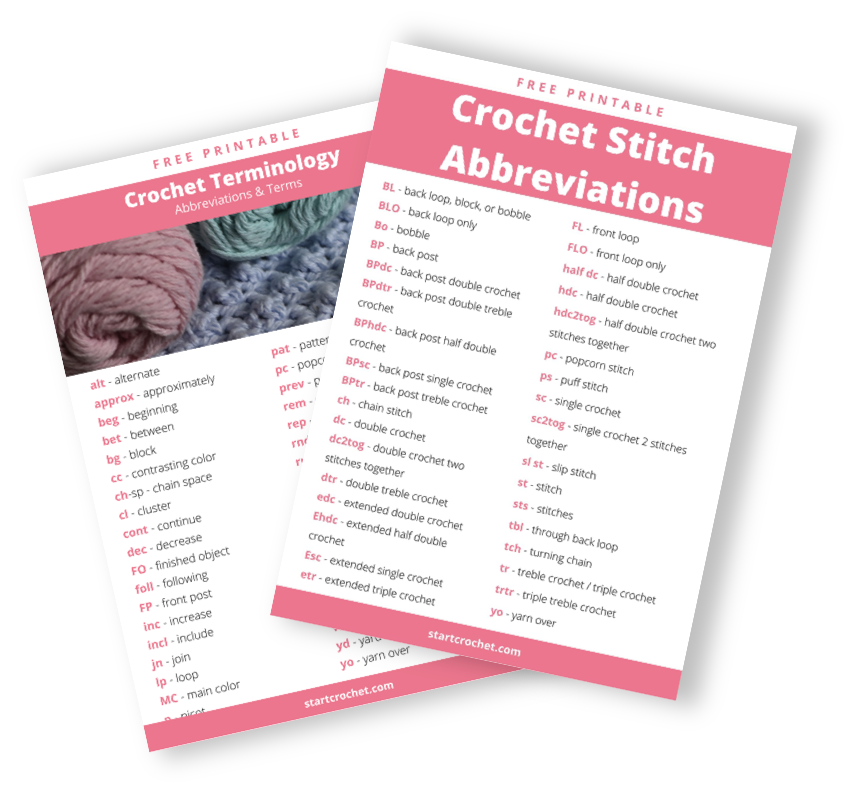
Your info is 100% secure and will never be shared.
9. Don’t Get Hung Up On The Terms & Rules Of Crochet
If something doesn’t work, offer an alternative. The key is to get the momentum and interest going. You can offer a variety of simple projects for your child to choose from.
See examples here.
- Praise Often, But Not Just General Praise
Recognise and affirm every step Individually, articulate what exactly they’re doing right. Have something positive to say, always. Is she holding the crochet hook perfectly? Is the yarn wrapped around her finger nicely? Offer encouragement as appropriate because this will make them feel good about their work and will most likely lead to faster progress. Show them how proud you are of them!
- Give Constructive Criticism
When something doesn’t go quite as expected, the most important thing is for you to keep your calm and explain what’s going wrong in an informative manner. As frustrating as it is, sometimes, this is a crucial way to keep your child’s interest in crochet and motivate her to keep on trying.
By constructive criticism, I mean, offering alternatives to something that’s not working, suggesting unraveling a few stitches, or maybe demonstrating a few times until she understands what’s going wrong.
- Have Fun, Keep Your Sense of Humour and Have Patience!
Always keep in mind the developmental stage your child is in when teaching crochet. Her motor skills might not be fully developed yet and her attention span might be quite short.
Kids love it when we make humorous comments, so maybe act out your child’s frustration and get them laughing!
- Clean Up!
Make sure you have a nice basket or pouch where you’ll be storing your child’s project. You’ll be teaching her how to clean-up after she’d done with the day’s lesson and will enable her to continue her project by easily finding it the next time.
So there you have it! And as my Canadian friend would say, “Holy Moly”, your child just learned a new lifelong skill! And I’m pretty sure that if the first session went well, she’ll be asking for more!
Best Crochet Products For Kids
It's so easy to start crocheting! All you need is a crochet hook and some yarn (and I'm sure you have a pair of scissors lying around somewhere).
It’s best to have the right equipment when you’re teaching your kids to crochet.
People have different preferences, of course, but generally speaking, a medium-sized 5 mm hook with a worsted-weight yarn would be ideal to start.
So here are my suggestions for you based on my own experience with my kids:
Crochet hooks
Most people recommend metal hooks to start with, although I personally prefer the plastic ones.
The plastic hooks I’ve used were super smooth and glide wonderfully across the yarn. I find them ideal for kids to hold. They are sturdy, handle comfortably, and stitch smoothly.
Metal crochet hooks sometimes have rubber handles which provides good grip, but can be cold to the touch when starting your crochet project in winter.
They do warm up eventually, though. There are AMOUR and Knit Pro Waves crochet hooks that are ideal for beginners, lightweight and very comfortable to hold.
Some yarns can be kind of “sticky” so best to use metal crochet hooks for those.
You don’t need to go all out and buy expensive crochet hooks right from the beginning.
There are some fabulous crochet hooks by Furls Crochet. Have a look at them here.
There are cheaper options that are sometimes just as good.
I’ve heard that you can go wrong buying cheap crochet hooks from Walmart, for instance, because they can bruise and cause blisters and callouses on your fingers if you crochet too long! But if you get the
With aluminum crochet hooks that have soft grip handles, you should be able to avoid these problems.
Crocheting with Aluminum crochet hooks with soft grip handles makes crocheting as smooth as butter! And the cushioning may help you avoid sore thumbs when crocheting a lot.
I’d stay away from wooden or bamboo hooks at the beginning.
They tend to have little snags that can mess up or catch on your yarn ruining the texture if you’re not careful.
Yarn for Beginners
Yarn types vary from animal fibers to plant and synthetic fibres.
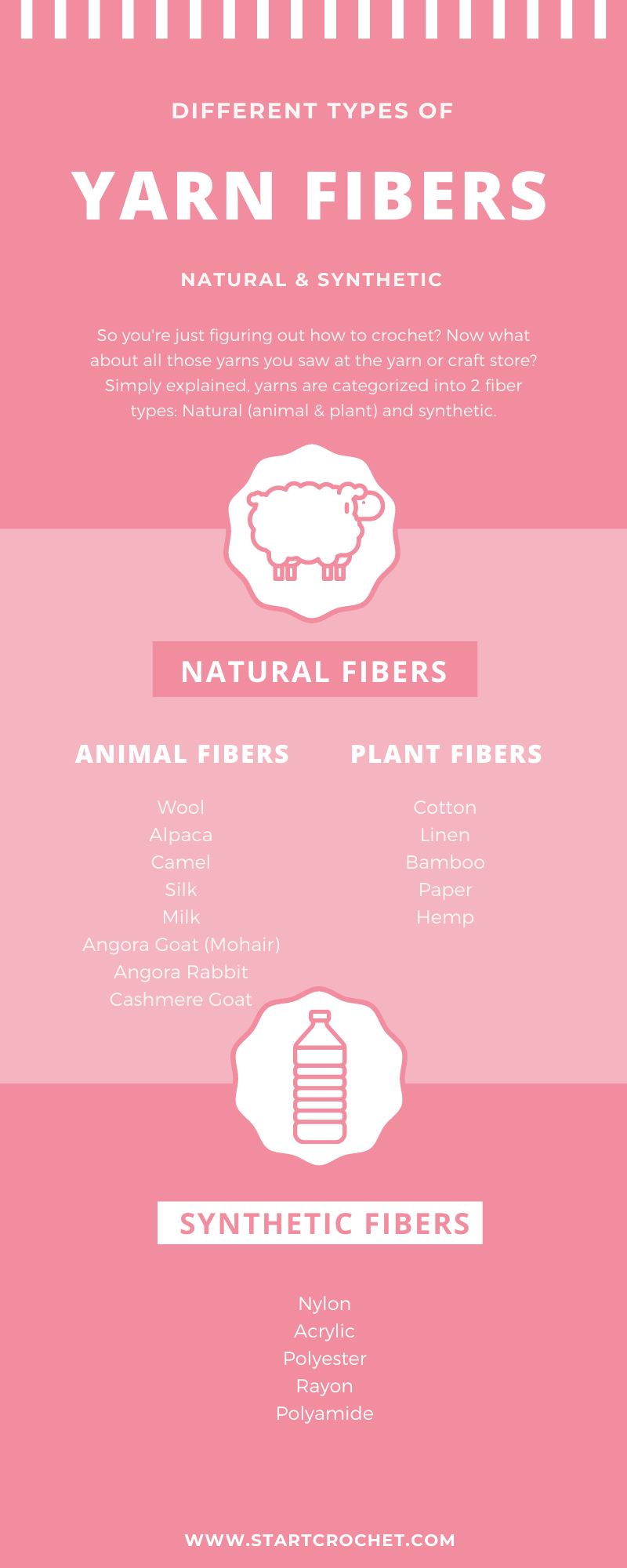


Yarn is categorized by its thickness and the standard yarn weight system is categorized from 0 to 6 with 0 being the thinnest and 6 the bulkiest.
Yarns normally have a recommended hook size written on them, so assuming you’re starting out with a 5.5 mm hook, you should ideally go for an appropriate Category 4 medium worsted weight yarn 10 Ply.
Find a colour and texture you like, then look for the number “4” and the word “Worsted” on the yarn label. Check out this Wool of the Andes Worsted Weight Yarn:
Every crochet pattern will tell you which weight yarn you should use together with what size hook to get the correct gauge for your project.
Here’s our favourite Lion Brand Heartland Aran Acrylic Yarn. It’s ideal for kids because it does not split, has a lovely range of bright colours, and this jumbo size makes it good value for money.
Crochet Kits For Kids
It's always great to start learning how to crochet with a starter kit. The Woobles is great at this because they make sure that the crochet kit includes everything you'll need to create a cute plushie AND it also includes step-by-step instructional videos for each plushie.
Crochet Kits from Etsy
If you want to kickstart your crochet teaching, how about surprising your child with this awesome crochet kit for kids? It has everything you need to get your child started with crochet right away.
Crochet Starter Kit from The Knitting Network
Or how about a crochet kit for your child's next birthday? Gift your child a lovely kid's starter crochet kit from the Knitting Network.
Frequently Asked Questions About How To Teach A Child To Crochet
At what age can you teach a child to crochet?
Children can learn how to crochet at quite a young age. Some start as early as 5 years old, but generally-speaking, I'd wait till kids are about 6 or 7 years old and they have developed their motor skills enough to be able to handle the hook and yarn.
Each child develops at his/her own rate, so I wouldn't rush or push a child to crochet. You can give it a go and you'll notice whether your child is ready or not. Just take it slow and develop the child's interest in the craft. Eventually, they'll come back to you asking you to teach them some more 🙂
What should a beginner child crochet?
It’s best to start with simple projects of items that are useful as well.
Choose something that uses just a minimal number of basic techniques (slip knot, chain and one or two types of stitches) and can be finished quite quickly.
Actually finishing a crochet project gives such a wonderful sense of accomplishment and will encourage your child to continue practicing with other new projects.
Some ideas for beginner crochet projects:
- Bracelet
- Necklace
- Scarf or cowl
- Ear Warmer
- Head band
- Purse or bag
- Square or rectangular Wash cloths
- Round face rubbies or coasters
- Basic beanie
- Beginner shawl
Why do crochet hook sizes matter?
Crochet hook sizes matter because the sizes of stitches differ depending on what crochet hook size you use.
A smaller hook will make smaller gaps within the yarn. So the overall project will end up being smaller.
It depends on how tightly your child will crochet, of course, but generally speaking, if she crochets too tightly in the beginning and is unable to loosen her stitches, just try with a larger sized hook. Go up maybe a half or full mm size (try a 6mm instead of 5mm hook).
Where can I find Crochet Kits For Kids?
You can definitely find starter crochet kits that are suitable for kids at your local craft store. Otherwise, you can also easily order these starter crochet kits online.
Which yarn should you use as a beginner?
There are thousands of yarn types on the market and you could even make your own by cutting up T-shirts into strips and joining them together till you’ve got a ball of yarn, but the most common yarn types for beginners are usually either wool, cotton or acrylic.
Each has its own pros and cons, of course, and yarn can be very personal, so just see what feels good in your hands and choose a colour you love.
One of the most important aspects of choosing a yarn is one where you can clearly see your stitches.
Choose something simple, uni-colored, easy to hold, thicker (which makes your project finish quicker).
Avoid textured yarn because it’s very difficult to see your stitches as you're working up your project.
Stay away from fine yarns. They’re pretty, but it takes longer to finish a project, which might get frustrating. They’re harder to hold too.
The lighter the weight of yarn, the thinner and smaller the crochet piece will be.
Have a look at the incredible yarn collection at WeCrochet:
The Last Thing You Need to Know About Teaching Your Kids to Crochet
Teaching your kids to crochet is truly a wonderful thing!
Know that you’re teaching them a lifelong skill that will benefit them all the way from their childhood right into their adult and even senior years.
Wouldn't it be great if learning how to crochet was integrated into children's schooling curriculums? While many people were forced into homeschooling because of the pandemic in 2020-2021, many gave crochet a go and you'll be fascinated to see the results! Head over to TikTok and type in crochet in the search bar!
Have a look a this article I wrote about the benefits of crochet. It’s absolutely mind-blowing how this one craft has so many positive effects on one's psyche and wellbeing.
It’ll be so satisfying for you to watch your precious child take a crochet hook and some yarn and keep herself busy creating wonderful projects and feeling so proud of herself!
Keep the encouragement going and boost her confidence by complimenting her efforts rather than the outcome of her projects.
Even if her project looks like a mess, that doesn’t matter at all. What truly matters is her willingness to start learning how to crochet and her willingness to try and experiment with it.
Have you already tried teaching your child to crochet? How did that work for you? Would love to hear how your experience went!
Let me know in the comments below if you have any questions and I’ll do my best to guide you through the process.
Wishing you all the best of luck!
One Last Thing... Free Online Crochet Courses!
There are some fabulous online crochet courses that your kids would love! You can get 2 months FREE on Skillshare!!
Take FREE Crochet Courses For 2 Months on SkillShare and help us earn $10 when you sign up at no cost to you 🙂
And don't forget to check out the Online Crochet Courses Page with lots more exciting crochet techniques to learn!
Happy Crocheting!
